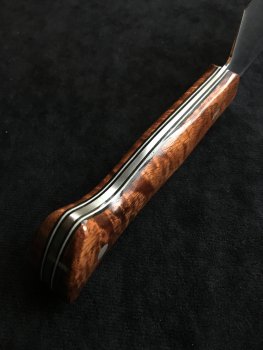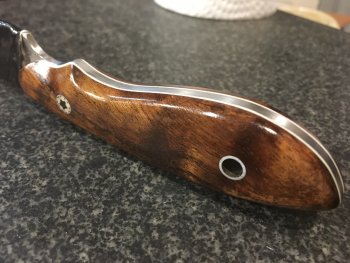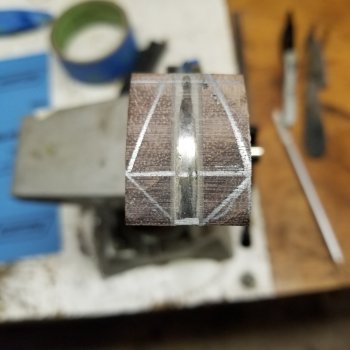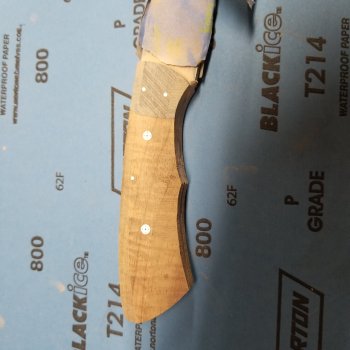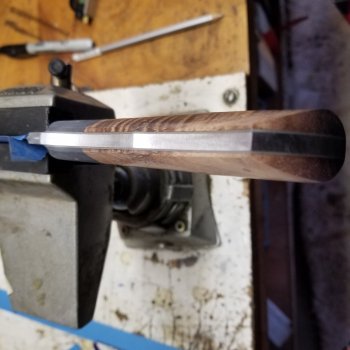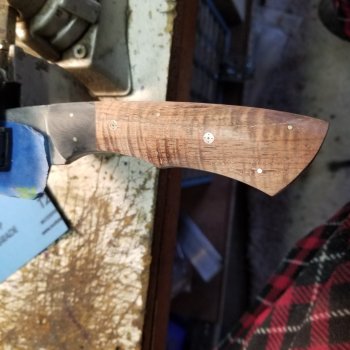I'm sorry. I just now realized that I never answered your question.
I cut my own scales from blocks of wood. The rare occasions that I buy pre-cut scales I go with 3/8 because I fully expect them to come warped and I'm going to have to flatten them. A 3/8 scale looks like a 2x4 when you put it on a 1/8 blade. But you are going to grind a whole lot of it away. Extra thickness is not waste, it's cushion for the process. The same philosophy applies to women. I'm j/k. But having more raw material is always better. When you get to the point where you don't need the cushion, you'll know. If you are cutting your own scales, then by all means make them thinner if you don't plan to sand a whole bunch away. I'm old school and out of date. I still like palm swells even though they are out of fashion. I don't care.
I have done this and it came out beautiful with a TruOil finish. Don't worry about the curve or the charred side. Cut the block, make it flat and square, then cut it in half for scales and flatten the cut side. Flat and square. repeat. Flat. and. Square.
The oak stave I used was from a Jim Beam barrel. I was worried, too. The oak looked really REALLY plain, especially after I made a nice square block out of it. But the good news is that all those years of holding whiskey allowed the whiskey to permeate the wood. The whiskey that got into the grain really darkened it and gave the wood figure it normally wouldn't have had. It was also the best smelling piece of wood I ever sanded LOL. I took my respirator off for that handle.
It will turn out fine.


